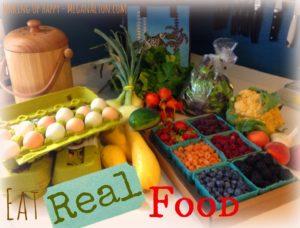 Every so often, you hear a lot of hopeful chatter about a new kind of nutrition label – something to make it quick and easy for consumers to grasp how healthful or horrible a product may be.
Every so often, you hear a lot of hopeful chatter about a new kind of nutrition label – something to make it quick and easy for consumers to grasp how healthful or horrible a product may be.
The latest version getting a whole lot of PR? Something called NuVal, which gives a single numerical rating to a product, ranging from 1 to 100. As the Wall Street Journal reported earlier this month,
The score is calculated based on positives, such as protein, calcium and other nutrient content, and negatives like sugar and cholesterol. Consumers who read the current nutritional labels must determine the overall health value of a food based on disparate pieces of information about nutrient content. NuVal instead boils all the information down so consumers can consider just the final score.
According to a recent marketing study out of the University of Pittsburgh, this means “healthier” choices. (We’ll get to the why of those “scare quotes” in a moment.)
“Our study indicated that the NuVal nutritional scale had an immediate and powerful impact on shopper’s decisions,” says [co-author] J. Jeffrey Inman, professor of marketing and of business administration. “They changed their purchasing behavior to pick healthier choices, and they switched to higher-scoring products. In fact, the simplified nutritional information boosted healthy choices by over 20 percent.”
Fine and dandy. But it glosses some important points.
The NuVal algorithm crunches the nutritional data for a product and then evaluates it against USDA nutritional guidelines. Yet as we’ve noted before, government health advice is problematic and often just flat out wrong. Add politics into the mix and what you get is a mess – as you’d expect when “health” matters are being decided upon by committees filled with individuals with close ties to corporate interests, as with the new national dietary guidelines released earlier this year.
And is label reading really such a dilemma? Here’s the other author of the marketing study:
“Thinking about the limited time that you have to go and do your grocery shopping, you don’t have time to pick up every product, look at the label, take another product, and compare the labels on all the different ingredients, so it helps with that as well—it facilitates the shopping,”
In reality, most of us buy the same things over and over. You only need to compare labels when you’re thinking about choosing a different brand. Even then, the most important part of the label isn’t the nutrition facts panel but the ingredients. Is there added sugar? How many different kinds? How close to the front does a sugar occur? Do you recognize all the ingredients as food or are there a bunch that come straight from a chemistry lab?
No number crunching required. (And if proposed revisions to the nutrition facts panel are approved, the sugar content will be even clearer.)
 But above all, the fact remains that such labeling systems are really only useful for products. Our bodies were not designed to eat nor function at their best on products. They were designed for food. Real food. Whole food. Each organic “package” bringing a full complement of nutritional value.
But above all, the fact remains that such labeling systems are really only useful for products. Our bodies were not designed to eat nor function at their best on products. They were designed for food. Real food. Whole food. Each organic “package” bringing a full complement of nutritional value.
Shop the perimeter, and you don’t need any scoring system. (Yes, decoding meat and dairy labels presents its own challenges, but there are helpful guides, such as this from EWG.)
Of course, there are a few types of items that are worth venturing into those middle aisles for – items that can help you make delicious, healthy and satisfying meals. These include
- Bulk foods, such as legumes, nuts, seeds and whole grains (should you choose to eat grains).
- Healthy fats such as coconut, olive, flaxseed, and avocado oils.
- Spices to impart deep and lively flavor into your food – some of which have amazing anti-inflammatory properties (e.g., turmeric).
Nutrition science can be tricky – this recent piece from Vox gives a good overview – but eating healthfully is not.
Only the likes of “marketeers” would have you think otherwise.
Top image by USDA, via Flickr